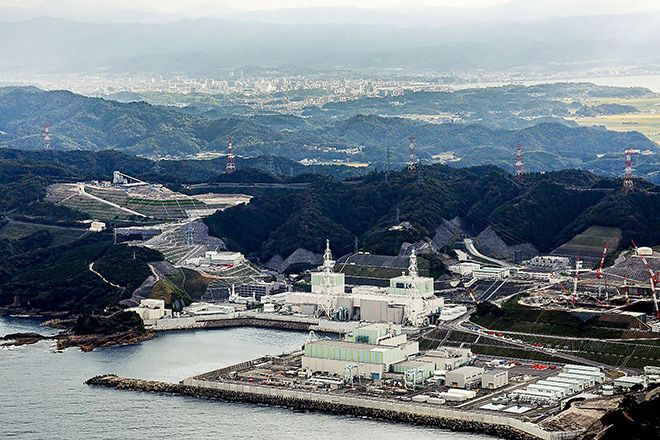MATSUE—Safety concerns among local residents have been rekindled along with the restarting of the long-idle Shimane nuclear power plant here.
After meeting new safety standards, the operator reactivated the plant’s No. 2 reactor, which is located less than 10 kilometers from the city center, on Dec. 7.
While Chugoku Electric Power Co. argues that restarting the plant will help improve its struggling financial situation, it is unlikely to lead to lower energy bills for local households.
“I didn’t want the plant to restart,” said Kyoko Kobayashi, 65, who lives 12 km from the plant.
If an emergency were to occur, she would need to evacuate to Masuda, approximately 140 km west, within Shimane Prefecture.
However, Kobayashi worries about the long time it would take to reach the national route and potential traffic congestion.
The presence of the Shinji fault located 2 km south of the restarted reactor adds to the concerns about seismic activity.
Shimane prefectural officials predict that a major earthquake along this fault could cause widespread damage in Matsue, with an estimated 11,000 buildings being destroyed or damaged.
Kobayashi fears that collapsed houses will block evacuation routes.
Additionally, the region is prone to landslides, with the prefecture having 32,210 locations of designated landslide hazard areas. This number is the third largest in the country.
Of these hazard areas, 253 are located in the community hosting the plant.
As a result of the Noto Peninsula earthquake in January, landslides and collapsed roads blocked evacuation routes within the 30-km radius of the Shika nuclear power plant in Ishikawa Prefecture, leaving 14 communities isolated.
“If a large earthquake occurs, the surrounding roads will certainly be severed,” said Gotaro Aoyama, 60, who heads the association of the community hosting the plant. “Evacuation by sea may also be impossible.”
The 30-km radius around the Shimane plant covers six cities across Shimane and Tottori prefectures, with a combined population of 450,000 people.
This makes it the third most densely populated area surrounding a nuclear plant in the country, following the areas around the Tokai No. 2 plant in Ibaraki Prefecture and the Hamaoka plant in Shizuoka Prefecture.
In the event of a nuclear accident, the Shimane prefectural government and police headquarters would relocate their operations to Izumo, 30 km west of the prefectural capital. Matsue’s city government, meanwhile, has yet to determine a relocation site.
“Since they are located too close to the plant, local authorities may struggle to respond to a crisis,” said Masatake Uezono, who previously taught at Shimane University and is now an economics professor at Hokkai-Gakuen University in Hokkaido.
ALL FOR THE MONEY
For the plant operator Chugoku Electric, restarting the power station is a crucial step in its financial recovery.
The company suffered a record net loss of 155.3 billion yen ($1.03 billion) in the fiscal year ending March 2023 after being fined for a cartel involving three other major utilities.
The full-year operation of the No. 2 reactor is expected to reduce costs by 80 billion yen through reduced reliance on fossil fuels.
Given this, Chugoku Electric plans to reduce electricity rates for factories and businesses starting in April.
However, the company appears unwilling to lower household energy bills, claiming the issue has already been addressed through other programs.
Chugoku Electric is also considering the launch of the plant’s No. 3 reactor, which was nearly completed before the 2011 Fukushima No. 1 nuclear power plant disaster.
The third reactor has since been suspended to comply with new safety standards introduced after the Fukushima accident.
The company aims to bring the reactor online by fiscal 2030 and is expediting its regulatory review process.
(This article was written by Tomoki Morishita and Koichi Hotta.)
